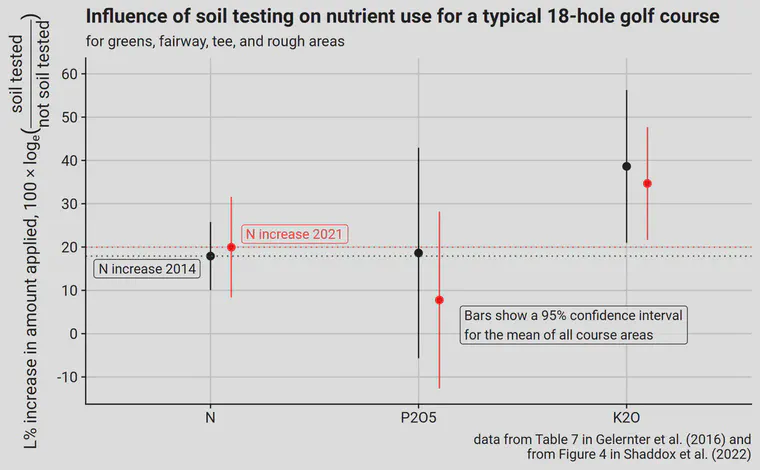Turfgrass P and K recommendations might be getting better
After the 2014 GCSAA nutrient survey, I wrote a blog post titled “maybe those that soil test are just more likely to fertilize in general?” I made the case that although they might be more likely to fertilize, there seemed to be an effect of soil testing on that too, at least for K. That was in reference to a blog post I’d written—with the title That’s not the way it is supposed to work—to highlight a striking result in the 2014 survey.
In short, soil testing, when done properly, should lead to a decrease in P and K applied, because the baseline safe amount to apply when not soil testing is 100% of plant use. Once soil testing is done, some soils will be able to supply some of the plant’s P and K, so the amount recommended as fertilizer, across multiple sites, should be lower than when soil testing is not used at all.
The 2014 survey, of course, showed that golf courses were applying more N and P and K when soil testing, compared with courses that did not soil test.
Nitrogen fertilizer rates are not determined by soil testing, so the increase in N rates can be used as a baseline of how much more likely courses that soil test are to fertilize in general. That’s what I looked at in the blog post in 2016.
Maybe the courses that soil test are busier, and consequently need to produce a more rapid growth rate, and that’s why they add more N. There are a number of reasons why N rate would be different that are independent of soil testing. When I used N as a baseline when looking at the 2014 survey results, the baseline N increase was a log percentage of 18 L%, P2O5 was up 19 L%, and K2O was up 39 L%.

I was pleased to see this same separation of the data was made in the analysis of the 2021 survey. For those same course areas that were reported in the 2014 survey, the baseline N increase was up to 20 L%, P2O5 was down to 8 L%, and K2O was down to 35 L%. There is still plenty of room for improvement, but the differences look better in 2021 than they did in 2014.